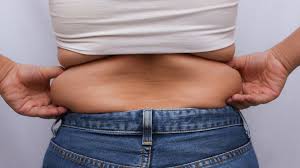Flank Liposuction Bruising: What to Expect Over Time
Flank liposuction bruising can be a real concern for anyone considering this plastic surgery treatment and fat removal procedure. While the results of a liposuction procedure can be transformative, the recovery process often includes some level of bruising and discomfort as surgical side effects. Knowing what to expect and how to manage it, from cosmetic consultation to surgical side effects, can make all the difference in achieving a satisfactory cosmetic result with little bruising.
Whether you’re planning your tumescent liposuction surgery or just curious, understanding these aspects like cosmetic result and little bruising will help you prepare better. Let’s explore how to achieve optimal results with tumescent liposuction while keeping bruising in check.
Understanding Liposuction
Liposuction Overview
Liposuction is a cosmetic procedure. It aims to remove unwanted fat from specific areas of the body, minimizing excessive bruising. This surgery helps in contouring and reshaping those areas. It is often used when diet and exercise fail to eliminate stubborn fat deposits.
Procedure Details
The liposuction procedure involves small incisions. A thin tube, called a cannula, is inserted. The surgeon uses this tube to break up and suction out the fat cells. Tumescent liposuction is a common method where a saline solution with anesthetic is injected first. This helps reduce bleeding and bruising.
Common Side Effects
Bruising is a natural side effect of liposuction surgery. The surgical process causes trauma to the tissues under the skin. Blood vessels can break, leading to visible bruises. These bruises may appear immediately after the surgery and can last for several weeks.
Target Areas
Liposuction targets various body parts like the abdomen, thighs, arms, and flanks. The flanks are the sides of the waist area. Removing fat from the flanks helps in achieving a more defined waistline. This area is prone to accumulating fat bulges that are hard to lose through exercise alone.
Post-Surgery Care
Proper care after liposuction is crucial for recovery. Patients should follow their surgeon’s instructions closely. Lymphatic drainage massage can help reduce swelling and bruising. Wearing compression garments also aids in minimizing these effects.
Expected Results
Liposuction results vary among individuals. Generally, patients notice an immediate difference in their body shape post-surgery. However, final results may take several months to become fully visible as swelling subsides.
Bruising Timeline Overview
Initial Days
Bruising starts immediately after flank liposuction. The first few days show the most vivid colors. You might see dark purple or blue bruises. This happens because blood vessels get damaged during surgery.
First Week
By the end of the first week, bruising is still very noticeable. The body begins to break down the blood cells in the bruised area. Colors may start to change from dark purple to green or yellow. Swelling often accompanies bruising during this period.
Second Week
During the second week, bruising remains visible but starts to fade. Most patients notice significant color changes. Green and yellow hues are more common now. Swelling also begins to reduce.
Third Week
In the third week, bruising continues to improve. Discoloration becomes less intense. Light yellow or brown shades replace earlier colors. The body absorbs more of the broken-down blood cells.
Fourth Week
By the fourth week, bruising should be minimal. Most discoloration fades away completely by now. Any remaining bruises are usually light brown or faint yellow. Swelling is mostly gone too.
End of First Month
At the end of the first month, bruising from flank liposuction typically disappears. The skin returns to its normal color. Some minor discoloration might persist but is usually not noticeable.
Initial Days Healing
Major Bruising
Bruising is common after flank liposuction. The first few days are the most intense. Major bruising often appears in the treatment area. This is due to the small incisions made during surgery. The use of a cannula also contributes to this.
The bruising usually starts as purple or blue marks. These colors are normal and expected. They indicate blood trapped under the skin.
Swelling
Swelling accompanies bruising in the initial days. It can make the treated area look larger than expected. This is part of the body’s healing process. Swelling usually peaks within the first 48 hours.
Keeping the head elevated helps reduce swelling. Avoiding strenuous activities also aids in minimizing it.
Cold Compresses
Cold compresses are effective for managing bruising and swelling. Apply them to the affected areas gently. Do this for 20 minutes at a time, several times a day.
Cold compresses help constrict blood vessels. This reduces blood flow to the area, which lessens bruising and swelling.
Gentle Walking
Gentle walking promotes good circulation. It helps reduce swelling and speeds up recovery. Start with short walks around your home.
Avoid heavy lifting or strenuous exercise during this period. Gentle movement aids in healing without straining the body.
Incision Care
Proper care of small incisions is crucial. Keep them clean and dry to prevent infection. Follow your surgeon’s instructions on how to care for these areas.
Changing bandages regularly helps maintain hygiene. Watch for signs of infection like redness or unusual discharge.
Pain Management
Pain is common in the initial days after surgery. Over-the-counter pain relievers can help manage discomfort. Always follow your doctor’s advice on medication use.
Avoid taking aspirin as it can increase bleeding and bruising. Stick to medications recommended by your healthcare provider.
Emotional Impact
Seeing major bruising and swelling can be emotionally challenging. Remember that these symptoms are temporary. They are part of the body’s natural response to surgery.
Talk to friends or family for support during this time. Keeping a positive outlook helps in coping with the recovery process.
Two Weeks Progress
Significant Reduction
By the two-week mark, expect a significant reduction in bruising and swelling. The body has had time to heal. Bruises should start to fade. Swelling will go down noticeably. Most people can return to normal activities.
Skin Color Change
The skin may change color during this period. Bruises often turn a yellowish hue as they heal. This is normal and part of the body’s recovery process. The yellow tint means the bruise is almost gone.
Less Discomfort
Discomfort should lessen considerably by now. Pain levels drop significantly. Movement becomes easier. You might still feel some tenderness, but it won’t be as intense.
Daily Activities
Many can resume daily activities after two weeks. Light exercises are usually safe. Walking is encouraged to boost circulation. Avoid strenuous activities until cleared by a doctor.
Diet Adjustments
Maintain a healthy diet to support healing. Eat foods rich in vitamins and minerals. Drink plenty of water to stay hydrated. Avoid alcohol and smoking as they can slow down recovery.
Work Return
Most people can return to work within two weeks. Ensure your job does not require heavy lifting or intense physical activity. If it does, speak with your employer about modified duties.
Healing Pockets
Healing pockets might still exist under the skin. These are areas where fluid collects. They usually resolve on their own. Massaging these areas gently can help.
One Month Milestone
Bruising Fades
By the one-month mark, any residual bruising or slight discoloration typically fades away. The healing process continues, and the treated area looks much better. Most patients notice that the bruises have almost completely disappeared. This is a significant improvement from the two-week progress point.
Final Form
The treated area should look closer to its final form by this point. Swelling reduces significantly, allowing you to see the results more clearly. Many patients feel more satisfied with their appearance at this stage. The skin starts to smooth out, and the contour becomes more defined.
Post-Op Care
Following post-op care instructions is crucial for optimal healing. Doctors usually recommend:
- Wearing compression garments
- Avoiding strenuous activities
- Keeping the treated area clean
These steps help in reducing swelling and promoting faster recovery. Ignoring these instructions may delay healing or cause complications.
Real-Life Experience
e patients share their experiences online. They often mention feeling a bit sore but much happier with their results. For example, Jane, a 35-year-old patient, said she saw a substantial change by day 30. She followed her doctor’s advice strictly and felt it made a big difference.
Emotional Relief
Reaching the one-month milestone brings emotional relief to many. The visible improvements boost confidence and make the initial discomfort worth it. Feeling more comfortable in your skin can positively impact your daily life.
Monitoring Progress
Regular check-ups with your doctor are essential during this period. These visits help monitor your progress and address any concerns. Your doctor might adjust your care routine based on how well you’re healing.
Complications Check
Though rare, complications can occur. Watch for signs like excessive swelling or unusual pain. If you notice anything alarming, contact your doctor immediately. Early detection helps prevent serious issues.
Long-Term Results
Cosmetic Results
Patients often seek flank liposuction for improved appearance. The cosmetic results can be long-lasting. However, maintaining these results requires effort. Regular exercise and a healthy diet are crucial.
Fat cells removed during liposuction do not return. But existing fat cells can expand if weight is gained. This makes lifestyle choices important.
Side Effects
Bruising is a common side effect post-surgery. It typically fades within weeks. Some patients may experience prolonged bruising or swelling. This varies from person to person.
Other surgical side effects can include numbness and minor scarring. These usually diminish over time. Patients should follow their surgeon’s advice for the best recovery.
Lifestyle Commitment
Long-term satisfaction depends on patient commitment to wellness. Regular exercise helps maintain the results of liposuction. Activities like walking, swimming, and strength training are beneficial.
A balanced diet also plays a key role. Consuming whole foods, lean proteins, and vegetables supports overall health. Avoiding excessive sugars and fats helps keep off unwanted weight.
Realistic Expectations
Setting realistic expectations is vital. Liposuction removes fat from specific areas but does not prevent future weight gain. Patients must understand that long-term cosmetic results rely on their lifestyle choices.
Maintaining a stable weight is essential. Fluctuations in weight can affect the treated area’s appearance. Consistent exercise and healthy eating habits help sustain the desired look.

Patient Information
Patients should gather all necessary information before undergoing treatment. Understanding the procedure, potential side effects, and recovery process is important.
Consulting with a qualified surgeon ensures patients are well-informed. Surgeons provide guidance on what to expect and how to care for the treated area post-surgery.
Minimizing Bruising
Compression Garments
Compression garments help reduce bruising and swelling. Surgeons often recommend wearing them after flank liposuction. These garments apply gentle pressure to the treated area. This pressure helps minimize visible bruising and reduces swelling.
Patients should wear compression garments as directed by their surgeon. Usually, surgeons advise wearing them for several weeks. Following these instructions can lead to better results and quicker recovery.
Avoiding Strenuous Activities
Avoid activities that could worsen bruising in the early recovery period. Strenuous exercises or heavy lifting can increase blood flow to the bruised areas. Increased blood flow may cause excessive bruising and delay healing.
Light walking is usually safe and can promote circulation. However, avoid activities that strain the body. Follow your surgeon’s guidelines on when you can resume normal activities.
Using Cold Compresses
Cold compresses can help with mild bruising and swelling. Applying a cold compress to the bruised area reduces blood flow, which helps lessen discoloration and swelling.
Use cold compresses for 15-20 minutes at a time. Do this several times a day, especially in the first 48 hours post-surgery. Ensure the compress is not too cold to avoid skin damage.
Staying Hydrated
Staying hydrated supports the body’s healing process. Drinking enough water helps flush out toxins from the body. It also aids in reducing swelling and promotes overall health.
Aim to drink at least eight glasses of water daily. Proper hydration can help reduce persistent bruising and speed up recovery.
Nutritious Diet
A nutritious diet is crucial for healing after cosmetic procedures like liposuction. Eating foods rich in vitamins and minerals supports tissue repair and reduces inflammation.
Include plenty of fruits, vegetables, lean proteins, and whole grains in your diet. Foods high in Vitamin C and K are particularly beneficial for healing bruises. Avoid foods that are high in salt as they can increase swelling.
Avoid Blood Thinners
Certain medications and supplements can thin the blood and increase surgical bruising heal time. Aspirin, ibuprofen, and some herbal supplements fall into this category.
Consult your surgeon about any medications you take regularly. They may advise stopping certain medications before surgery to minimize bad bruising risks.
Gentle Massage
Gentle massage can help reduce residual bruising once initial swelling has subsided. Massaging the area increases blood flow, which helps clear away trapped blood under the skin.
Perform gentle massages as recommended by your surgeon. Be careful not to apply too much pressure to avoid causing further damage to the area.
Post-Op Care Tips
Follow Instructions
Patients must follow all post-operative instructions provided by the surgeon. These guidelines are crucial for a smooth recovery. They often include:
- Taking prescribed medications on time.
- Wearing compression garments to reduce swelling.
- Keeping the surgical area clean and dry.
Ignoring these instructions can delay healing.
Attend Follow-Ups
Follow-up appointments are essential. Surgeons monitor recovery progress during these visits. They check for any signs of complications. Missing these appointments can lead to unnoticed issues.
Watch for Signs
Certain symptoms require immediate medical attention. Patients should watch for:
- Excessive swelling or bruising.
- Severe pain that doesn’t improve with medication.
- Any signs of infection, like redness or fever.
Early detection of these signs can prevent severe complications.
Rest and Activity
Rest is crucial after surgery. Patients should avoid strenuous activities. Light walking is encouraged to promote blood flow. Overexertion can increase bruising and delay healing.
Diet and Hydration
A healthy diet aids recovery. Patients should eat balanced meals rich in vitamins and minerals. Staying hydrated is also important. Water helps flush out toxins from the body.
Compression Garments
Wearing compression garments helps reduce swelling. It also supports the surgical area. Patients should wear them as directed by their surgeon.
Pain Management
Pain is common after surgery. Surgeons prescribe pain medications to manage this. It’s important to take these medicines as directed. Over-the-counter pain relievers may be used if approved by the surgeon.
Avoid Smoking and Alcohol
Smoking and alcohol can hinder recovery. They can increase the risk of complications. Patients should avoid these substances until fully healed.
Closing Thoughts
Flank liposuction bruising can be a bit of a rollercoaster. But with the right care and patience, you’ll see amazing results. Stick to your post-op care tips and give your body the time it needs to heal. Remember, every bruise is a step closer to the new you.
We hope this guide helps you through your journey. Got questions? Don’t hesitate to reach out to your healthcare provider. Stay informed, stay patient, and look forward to flaunting your results soon. Ready to take the next step? Dive deeper into our resources or share your experiences with our community.
Frequently Asked Questions
What is the typical bruising timeline after flank liposuction?
Bruising usually appears immediately and peaks in 2-3 days. It gradually fades over 2 weeks, with significant improvement by the one-month mark.
How can I minimize bruising after liposuction?
To minimize bruising, follow your surgeon’s post-op care instructions, wear compression garments, and avoid strenuous activities. Arnica supplements may also help.
Is bruising after liposuction normal?
Yes, bruising is a common side effect of liposuction. It’s part of the body’s natural healing process and typically resolves within a few weeks.
When will I see the final results of my flank liposuction?
Final results are generally visible after 6 months when all swelling and bruising have subsided. Patience is key during the healing process.
What should I do if my bruising seems excessive?
If you notice excessive or worsening bruising, contact your surgeon immediately. They can assess your condition and provide appropriate advice or treatment.
Are there any long-term effects of bruising from liposuction?
Bruising from liposuction typically has no long-term effects. Any discoloration or tenderness should resolve completely within a few months.
Can I speed up the healing process for bruising?
While you can’t rush healing, you can support it by staying hydrated, eating a healthy diet, and following all post-op care instructions from your surgeon.




